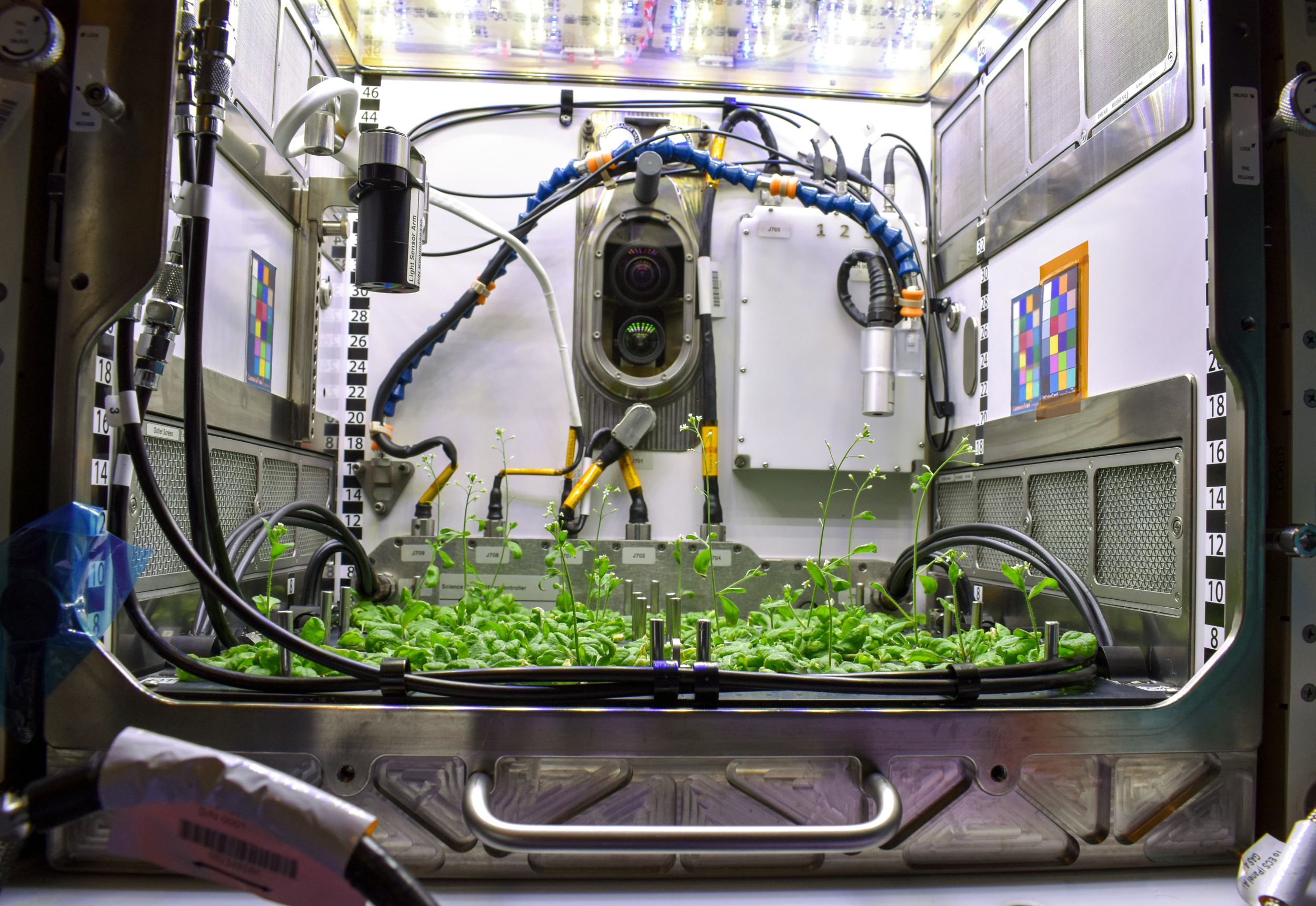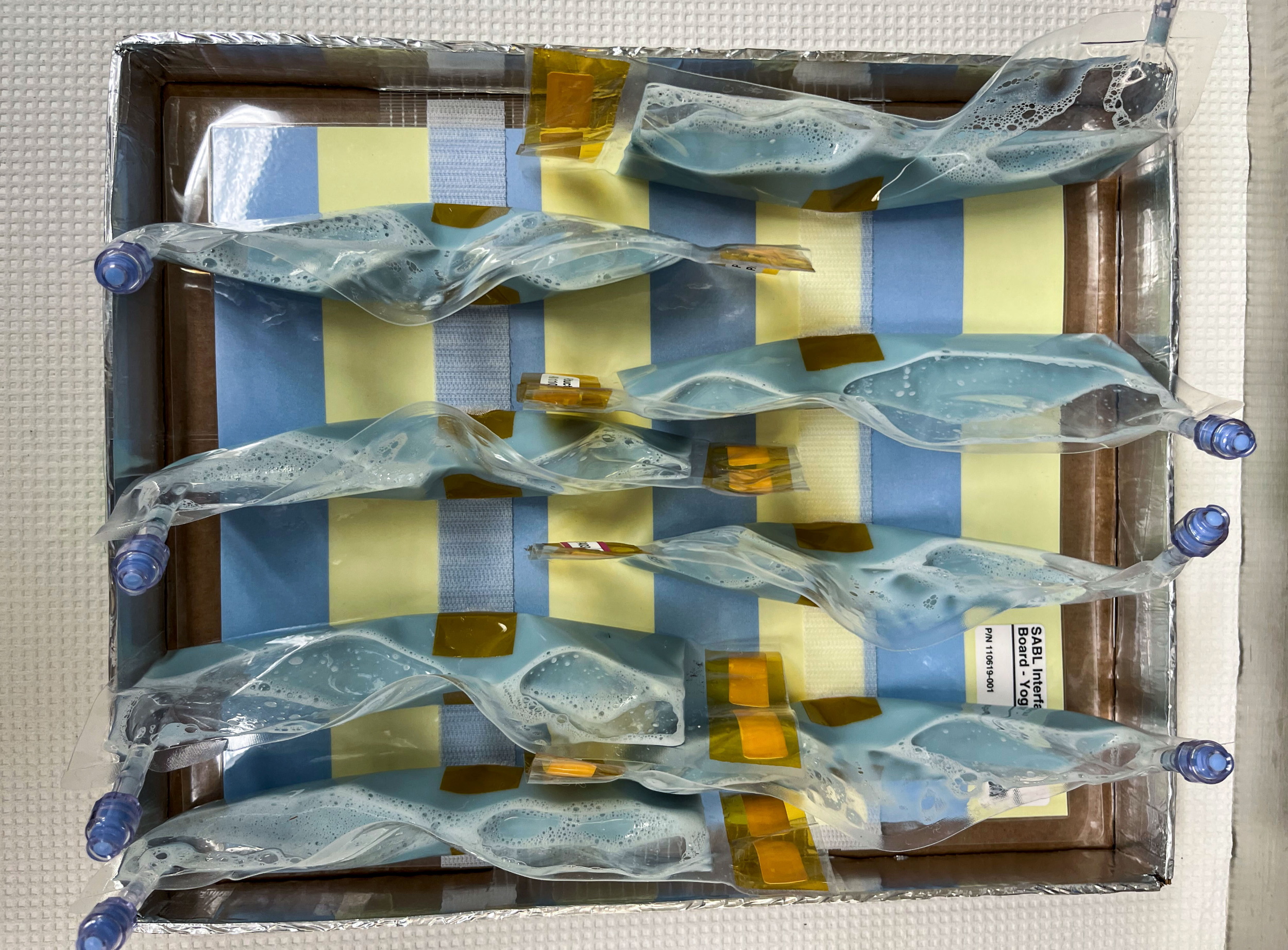If astronauts are going to undertake multi-year missions or establish a sustainable presence on the Moon and Mars, they’ll need fresh food and medical supplies, not exactly easy to come by off-planet. The latest load of supplies heading to the ISS includes a few new options, including yogurt production and some potentially delicious space tomatoes.
The tomatoes (seen above) are just the latest phase in a long-running experiment on the space station regarding the growth of edible plants in microgravity and artificial light. But while the last few years of work have focused on leafy greens like spinach and herbs, Veg-05 will look at how a juicy payload like a dwarf tomato grows in this unusual garden environment.
The mission will examine “light quality and fertilizer on fruit production, microbial food safety, nutritional value, taste acceptability by the crew, and the overall behavioral health benefits of having plants and fresh food in space.” It’s essential to get the parameters of the light and nutrient flow dialed in, so they’re providing different combinations of conditions, including varying LED light combinations, to see which produces the best tomatoes over the 104-day growth period.
Like terrestrial gardening, it’s a pretty high-touch experiment for the ISS crew. “Crew members tend to the plants by opening wicks to help seedlings emerge, providing water, thinning the seedlings, pollination, and monitoring health and progress,” the description reads. At the end, of course, they’ll eat at least some of them, which will probably be a bittersweet moment after raising the plants from sprouthood.
That won’t be the only garden on the ISS, either. October’s resupply mission brought up Plant Habitat-03, an experiment looking into epigenetic effects on plants in microgravity. Changes in environment can produce changes in how and which genes are expressed, and of course living in orbit is a substantial change in environment.

A view into NASA’s Kennedy Space Center’s Advanced Plant Habitat (APH) during experiment verification testing for the Plant Habitat-03 investigation.
We know that these changes happen in space, but we don’t know whether the changes are heritable, or whether certain strains or mutations will yield more space-friendly variants of plants after these epigenetic changes occur. This study takes seeds produced in space and compares the plants that grow from them with seeds produced on the surface. With luck, we could find some special microgravity adaptations that let plants thrive in this unusual condition.
Some vitamins and minerals are also better fresh. And one interesting approach to manufacturing them on demand is to use beneficial microbes like those found in yogurt-type foods. BioNutrients-2 is the second phase of an attempt to create a shelf-stable pre-yogurt mix that, when hydrated, results in the bacteria naturally producing a target nutrient.
The experiment flying to the ISS today has three potential yo-hosts: “yogurt, a different fermented milk product known as kefir, and a yeast-based beverage. Each of these is designed to provide specific nutritional products.”

BioNutrients-2 Yogurt Bags on SABL Tray Mockup, after initial hydration. The blue color of the bag’s contents comes from the pH Indicator. The SABL interface board, behind the bags, provides a reference for the starting and ending colors.
Bacteria and yeast are frequently modified for various purposes; a common one is for bioreactors, where the organisms produce a given molecule as part of their normal biological processes — a sugar like glucose, for instance, but also more complex molecules like medications. But whether and how to do this effectively and easily in space, for human consumption, is an open question this experiment aims to shed a little light on.
That lovely blue color will disappear, though — it’s a pH indicator and eventually the stuff turns yogurt color.
In addition to the food and growing stuff, there’s a variety of interesting medical experiments going on up there from these latest resupply missions. Microgravity produces lots of interesting and sometimes deleterious effects on the human body, and not only that, but it affects what treatments are possible and how effective they are. What if a given medicine only works in gravity for some reason? You’d hate to find that out halfway to Mars.
So we’ve got a new biofabrication test, seeing if human tissue can be effectively (perhaps more effectively!) cultivated and printed in microgravity; a “Moon Microscope” meant to do quick, simple diagnosis under non-Earth conditions; “Falcon Goggles” that capture detailed imagery on the user’s eyes to see how microgravity may affect how they work and adapt; and a handful of other projects from various research institutions looking at how various treatments or devices work in orbit.
You can watch the launch live right here after about 1 PM Pacific time.
Space tomatoes and prescription yogurt incubator rocket to the ISS today by Devin Coldewey originally published on TechCrunch















 English (US) ·
English (US) ·